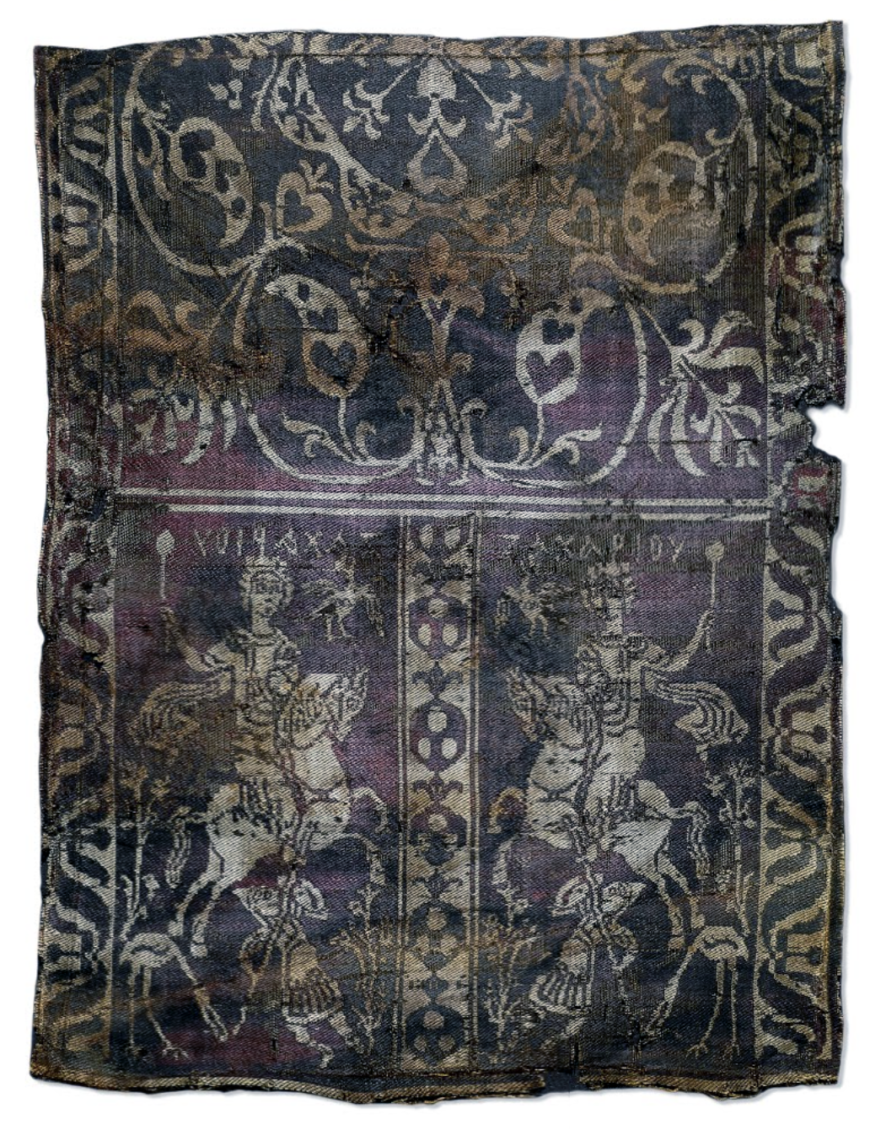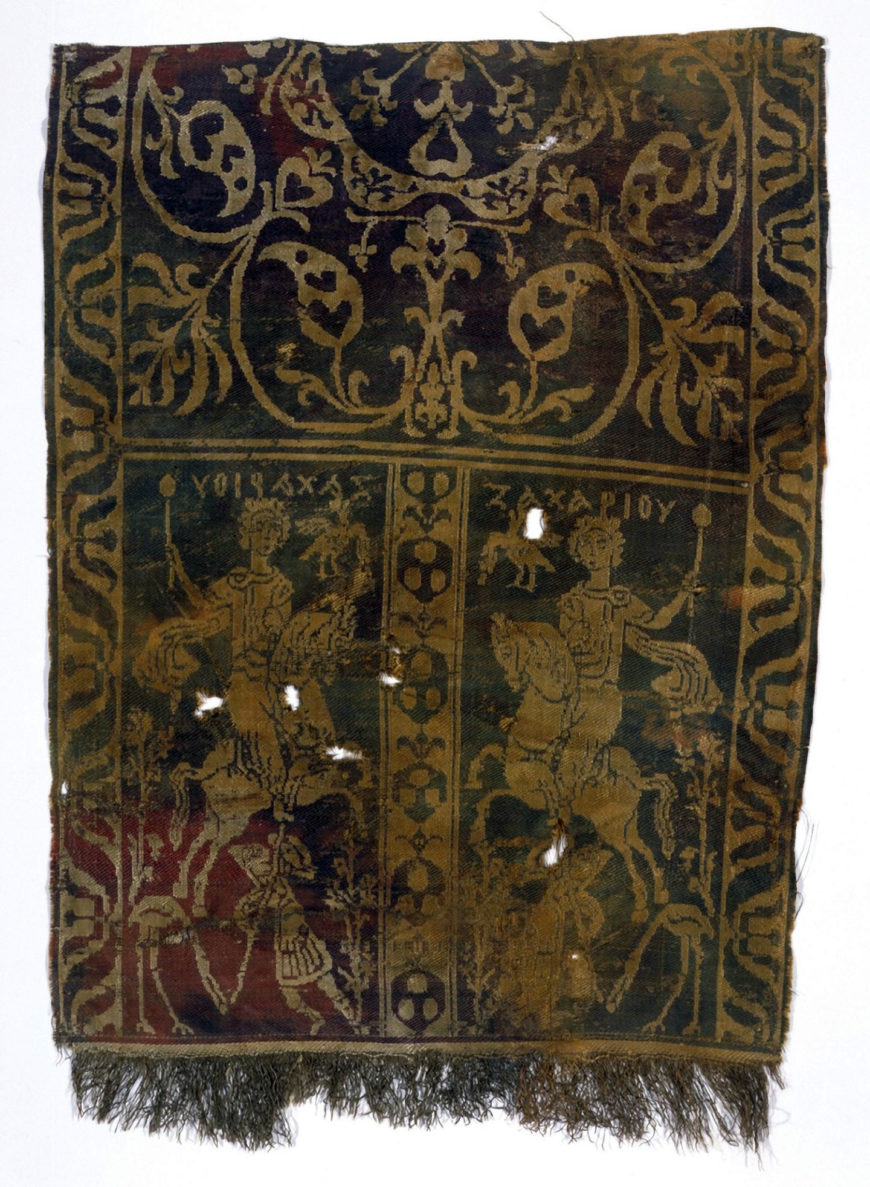
Part of a silk panel, Coptic Egypt, early 8th century, 29 cm high, probably from Akhmîm, Upper Egypt (© Trustees of the British Museum)
A silk panel used as a sleeve ornament on a tunic
Two scenes, one a mirror image of the other, depict a mounted emperor carrying a scepter. They are separated by a column of balloon-like blossoms. The emperor’s rearing horse rides over a soldier with a spear. A sense of landscape is created with plant forms, a long-legged water bird and a bird wearing a scarf. A woven inscription above reads Zachariou, possibly identifying the owner of the textile workshop as a Zacharias or Zachariah. The section above the inscriptions has a pattern of abstract blossoms on curvilinear stems with leafy sprigs. Strips of chandelier-shaped leaves form borders down the sides. The silk is woven with purple and white threads in a weft-faced compound twill.
Several other silk fragments with this same pattern survive, and it is likely that many of them came from Akhmîm in Upper Egypt where a large number of textiles were found in graves in the late nineteenth century. A fragment in the Victoria and Albert Museum in London may be the other half of this particular panel.
Plain tunics were traditionally decorated with separately woven medallions and strips from the Late Antique period onwards. By the seventh and eighth centuries, patterns on the highest-quality silk panels had become extremely sophisticated and complex as here.
© Trustees of the British Museum



